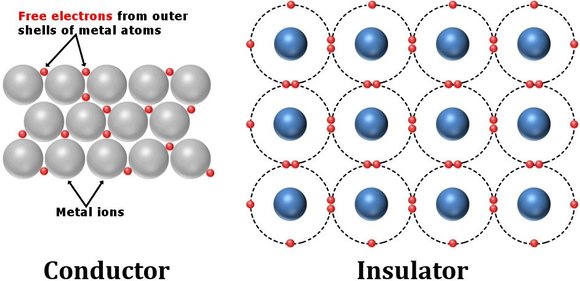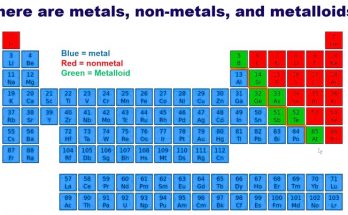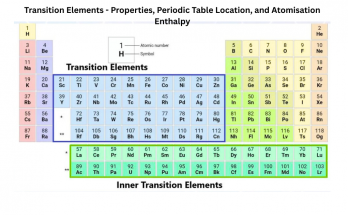Electricity plays a vital role in our daily lives. Everything from charging our phones to running household appliances relies on the movement of electric charges. But have you ever wondered why some materials allow electricity to pass through easily while others block it? The answer lies in two important concepts in physics: conductors and insulators.
Table of Contents
What is a Conductor?
A conductor is a type of material that allows electric current (flow of electric charges) to pass through it easily. This ability to conduct electricity is due to the presence of free electrons that move freely within the material.
To understand why conductors allow electricity to flow, we must first look at the structure of atoms in conductive materials.
Why Do Conductors Conduct Electricity?
Electricity is the movement of charged particles, usually electrons, through a substance. The ability of a material to conduct electricity depends on how its electrons behave.
1. The Role of Electrons in Conductivity
- Atoms consist of a nucleus (containing protons and neutrons) and electrons that orbit around the nucleus in different energy levels.
- The electrons in the outermost energy level of an atom are called valence electrons.
- In some materials, especially metals, these valence electrons are loosely bound to the atom.
- Because they are weakly held, these electrons can move freely within the material when an electric field (voltage) is applied.
2. The Free Electron Model
- In metals, there is a “sea of electrons,” where valence electrons are not attached to a specific atom but instead move freely.
- This free movement of electrons allows electricity to pass through the material efficiently.
- When an external voltage is applied (such as from a battery), the free electrons drift toward the positive end, creating an electric current.
3. Resistance and Conductors
- Resistance is the opposition to the flow of electric current.
- Good conductors have very low resistance, meaning they allow electricity to flow with little loss of energy.
- Poor conductors (or resistors) have higher resistance, making it harder for electrons to flow.
Examples of Conductors
Conductors are usually metals, but other materials can also conduct electricity under certain conditions.
1. Metals (Best Conductors)
Metals are the best conductors of electricity because of their free electrons.
- Silver (Ag) – The best natural conductor of electricity.
- Copper (Cu) – The most commonly used conductor due to its balance of cost, availability and conductivity.
- Gold (Au) – Does not corrode, making it ideal for high-quality electronic connections.
- Aluminum (Al) – Lighter than copper and used in high-voltage power lines.
- Iron (Fe) – Conducts electricity but has more resistance than copper and aluminum.
2. Graphite (A Non-Metal Conductor)
- Graphite is a form of carbon that can conduct electricity.
- Unlike most non-metals, it has delocalized electrons that move freely between its layers.
- Used in pencil leads and some electrical applications.
3. Salt Water (Electrolyte Conductors)
- Pure water does not conduct electricity well, but saltwater does.
- When salt (sodium chloride) dissolves in water, it separates into charged ions (Na⁺ and Cl⁻).
- These ions move freely in water, allowing electricity to flow.
4. Plasma (Ionized Gas)
- Plasma is a state of matter where gases are ionized, meaning they have free-moving charged particles (electrons and ions).
- Lightning and neon lights use plasma to conduct electricity.
Common Uses of Conductors
Conductors are essential in daily life and technology because they allow the smooth transmission of electricity.
1. Electrical Wiring (Copper and Aluminum)
- Copper is used in household wiring, power cables and appliances because it is a great conductor and does not corrode easily.
- Aluminum is used in high-voltage power lines because it is lighter and cheaper than copper.
2. Electronic Components (Gold and Silver)
- Gold is used in high-quality electronic components, such as computer chips, smartphone connectors and satellites, because it does not corrode.
- Silver is used in some high-performance circuits.
3. Lightning Rods (Copper and Aluminum)
- Lightning rods provide a safe path for lightning to travel to the ground.
- They prevent damage to buildings by redirecting high-voltage electrical energy.
4. Battery Connections (Conductive Materials)
- The terminals of batteries (positive and negative ends) are made of metal conductors to allow efficient flow of electricity to the circuit.
- Copper and aluminum are commonly used in battery cables.
5. Electric Motors and Generators
- Electric motors and generators use coils of wire (usually copper) to create and conduct electricity.
- This allows them to convert electrical energy into mechanical motion and vice versa.
Also Check – 15 Shockingly Cool Facts About Conductors & Insulators!
What is an Insulator?
An insulator is a type of material that does not allow electric current (flow of electric charges) to pass through it easily. Unlike conductors, which have free electrons that move easily, insulators have very tightly bound electrons, making it difficult for electricity to flow through them.
Insulators are essential in electrical systems because they prevent the accidental flow of electricity, ensuring safety and efficient energy use.
Why Do Insulators Resist Electricity?
The ability of a material to resist electricity is determined by its atomic structure and how strongly it holds onto its electrons.
1. Strong Electron Bonds
- Atoms in an insulator have valence electrons (outermost electrons) that are strongly attached to their nucleus.
- Unlike in conductors, these electrons do not move freely, meaning that electrical current cannot flow easily.
2. Lack of Free Electrons
- In conductors, free electrons move easily to create an electric current.
- In insulators, almost all electrons are fixed in place, so they do not contribute to current flow.
3. High Electrical Resistance
- Resistance is the opposition to electric current.
- Insulators have very high resistance, preventing electricity from passing through.
- This makes them useful in protecting people and devices from electrical hazards.
Examples of Insulators
Insulators are typically non-metallic materials. Here are some common examples:
1. Plastic
- Used as coatings for electrical wires to prevent short circuits and electric shocks.
- Common in electric plugs, cables and switches.
2. Rubber
- A strong electrical insulator, rubber is used in electrician gloves and footwear to protect against shocks.
- Found in wire coverings, tires and gaskets.
3. Glass
- A very effective insulator, glass is used in high-voltage power lines.
- Used in electrical components like vacuum tubes and light bulbs.
4. Wood (When Dry)
- Wood is a poor conductor of electricity when dry.
- Used in some electrical supports and handles for tools.
5. Ceramic
- Extremely heat-resistant and non-conductive.
- Used in insulating power lines and high-voltage electrical equipment.
6. Pure Water
- Distilled water (without minerals) does not conduct electricity well.
- However, impure water (with salts or minerals) can conduct electricity.
Common Uses of Insulators
Insulators are crucial in preventing electric shocks, fires and energy loss. Here are some practical applications:
1. Wire Coatings (Plastic and Rubber)
- Electrical wires are covered in plastic or rubber insulation to prevent short circuits and shocks.
- Found in home appliances, power cables and electronics.
2. Electrical Poles (Glass and Ceramic)
- High-voltage power lines are supported by glass or ceramic insulators.
- These materials prevent electricity from escaping into the environment.
3. Handle Covers (Rubber and Wood)
- Tools used by electricians have rubber or plastic handles to prevent shocks.
- Examples: Screwdrivers, pliers, wrenches.
4. Protective Gear (Rubber Gloves and Boots)
- Rubber gloves and boots are worn by electricians to protect them from electric currents.
- Used in power plant maintenance and high-voltage work.
5. Electronic Circuit Boards
- Circuit boards contain insulating layers to prevent short circuits.
- Materials like fiberglass and plastic are commonly used.
How Insulators Help in Everyday Life
- Prevents Electrical Accidents – Insulators stop accidental electrocution and fire hazards.
- Enhances Energy Efficiency – They control the flow of electricity, ensuring it goes where it’s needed.
- Protects Electronic Devices – Insulating materials prevent damage in electrical appliances.
Differences Between Conductors and Insulators
| Feature | Conductors | Insulators |
| Definition | A material that allows electricity (electric charges) to pass through easily. | A material that resists the flow of electricity, preventing electric current from passing through. |
| Electron Behavior | Electrons in conductors are loosely bound and can move freely throughout the material. | Electrons in insulators are tightly bound to atoms and cannot move freely. |
| Electrical Resistance | Low electrical resistance, meaning electrons move with little opposition. | High electrical resistance, meaning electrons cannot move easily. |
| Charge Transfer | Electric charge can easily move and spread across the surface. | Electric charge stays localized and does not spread. |
| Current Flow | Allows continuous movement of electric charges (current). | Blocks or significantly resists the movement of electric charges. |
| Conductivity | High electrical conductivity (easily transmits electricity). | Low or no electrical conductivity (does not allow electricity to pass). |
| Heat Conductivity | Also a good conductor of heat, meaning it transfers heat efficiently. | A poor conductor of heat, meaning it resists heat flow (thermal insulator). |
| Effect of Temperature on Conductivity | Conductivity decreases as temperature increases because metal atoms vibrate more, scattering free electrons. | Some insulators may conduct at very high temperatures (e.g., glass can become conductive when heated enough). |
| Static Electricity Behavior | Do not hold static charge for long because the electrons move away quickly. | Can accumulate and retain static charge since electrons are not free to move. |
| Examples of Materials | Metals (Copper, Silver, Gold, Aluminum, Iron), Graphite (a form of carbon), Salt Water (due to dissolved ions), Plasma (ionized gas). | Plastic, Rubber, Glass, Dry Wood, Ceramics, Distilled Water (without dissolved ions). |
| Usage in Electrical Systems | Used to carry and transmit electricity in electrical circuits, wiring and power transmission. | Used to prevent unwanted current flow and protect people and devices from electric shock. |
| Common Applications | Electrical wires, circuits, batteries, lightning rods, electric motors, generators, electronic devices. | Wire coatings, power line insulators, electrical tools, rubber gloves, switchboards, protective gear. |
| Industrial and Household Applications | Used in power grids, motors, generators, electric appliances and electronic circuits. | Found in protective casings for wires, electrical insulators for high-voltage lines and non-conductive housings in appliances. |
| Physical State Influence | Most conductors are solid metals at room temperature. Some liquids and gases (like ionized plasma) can also conduct electricity. | Insulators can exist in solid (rubber, glass, plastic), liquid (pure water) and gaseous forms. |
| Lightning and Electrical Discharges | Conducts electricity and can be used to safely direct lightning (e.g., lightning rods). | Prevents electric discharge by stopping the flow of electricity, reducing the risk of electric shocks. |
Conceptual Questions & Answers on Conductors and Insulators
Why Do Metals Conduct Electricity While Non-Metals (Except Graphite) Do Not?
Answer:
Metals conduct electricity because they have free-moving valence electrons following the electron sea model. These electrons are not tightly bound to atoms, allowing them to move when an electric field is applied. In contrast, non-metals (except graphite) have electrons held tightly, so there are no free electrons available to carry the current.
2. Why Does Increasing the Temperature of a Conductor Usually Decrease Its Conductivity?
Answer:
When the temperature increases, metal atoms vibrate more vigorously, leading to more frequent collisions between free electrons and atoms. This scattering increases resistance, making it harder for current to flow. (Note: Some materials, like semiconductors, may show increased conductivity at higher temperatures.)
3. Why Does Saltwater Conduct Electricity While Pure Water Does Not?
Answer:
Pure water lacks free-moving charged particles (ions), which makes it an insulator. When salt dissolves in water, it dissociates into positively charged sodium ions (Na⁺) and negatively charged chloride ions (Cl⁻). These ions serve as charge carriers, allowing electricity to pass through the solution.
4. If a Piece of Wood Is Heated to Extremely High Temperatures Until It Turns into Carbonized Charcoal, Will It Conduct Electricity? Why or Why Not?
Answer:
Yes, charred wood (carbonized wood) can conduct electricity because it becomes similar to graphite—a form of carbon with delocalized electrons. In its original dry state, wood is an insulator due to the lack of free electrons. This demonstrates that some materials initially insulating can become conductive when their structure changes.
5. Why Are Electrical Wires Made of Copper but Coated with Plastic?
Answer:
Copper is used because it is a great conductor with low resistance, efficiently transmitting electricity with minimal energy loss. Plastic is applied as a coating because it is an insulator that prevents short circuits and electric shocks by blocking the flow of electricity outside the wire.
6. Why Does a Person Experience an Electric Shock When Touching a Live Wire but Not When Touching an Insulator?
Answer:
When a person touches a live conductor, such as a bare wire, their body acts as a conductor. This allows electricity to flow through the body to the ground, resulting in an electric shock. In contrast, touching an insulated wire (for example, one with a plastic coating) prevents the current from passing through the body.
7. Why Do Electricians Wear Rubber Gloves and Stand on Rubber Mats When Working with Electricity?
Answer:
Rubber is an excellent insulator that does not allow electric current to pass through. Rubber gloves protect the electrician’s hands by stopping the flow of current, and rubber mats prevent grounding, providing additional safety during electrical work.
8. Can a Conductor Ever Behave Like an Insulator? If So, Under What Conditions?
Answer:
Yes, a conductor can behave like an insulator under certain conditions. For instance, at very low temperatures, some materials may reach a state where electrons no longer move freely, making them behave like insulators. Additionally, if a conductor is coated with an insulating material, it can prevent electric flow under specific circumstances.
9. If You Rub a Plastic Rod with a Wool Cloth, Why Does It Accumulate Charge, but a Metal Rod Does Not?
Answer:
Plastic is an insulator, so when it is rubbed with a wool cloth, electrons transfer and remain localized on its surface, resulting in static charge buildup. In contrast, metals are conductors; any charge that develops will quickly dissipate, especially if the rod is touched, as electrons will flow away.
10. Why Do Electrical Power Lines Use Ceramic or Glass Insulators Instead of Plastic?
Answer:
Ceramic and glass insulators are used in high-voltage applications because they can withstand extremely high voltages without breaking down. They are also highly heat-resistant and do not absorb moisture, ensuring long-lasting and stable insulation. Plastic may melt or degrade under high voltage, making it less suitable for these applications.
11. Why Do Metal Spoons Feel Colder Than Wooden Spoons Even at the Same Temperature?
Answer:
Metal is an excellent conductor of heat, rapidly transferring heat away from your skin, which makes it feel colder. Wood, being an insulator, does not transfer heat efficiently, so it feels warmer even when both are at the same room temperature.
12. If a Metal Rod Is Heated at One End, Why Does the Other End Become Hot Quickly? Would the Same Happen with a Wooden Rod?
Answer:
In a metal rod, heat is transferred quickly due to metals being excellent thermal conductors. In contrast, wood is a thermal insulator, so heat transfer is much slower, and the far end remains relatively cool for a longer period.
13. Why Do Electrical Wires Become Hot When Too Much Current Flows Through Them?
Answer:
Excess current in a conductor results in more frequent collisions between electrons and atoms. These collisions increase resistance and cause energy to be dissipated as heat, which can lead to wires becoming hot and, in extreme cases, may result in electrical fires.
14. What Would Happen if Power Transmission Lines Were Not Insulated Properly?
Answer:
Without proper insulation, power transmission lines could leak electricity into the surrounding environment, leading to energy loss. There would also be a higher risk of accidental electrocution for people or animals, and short circuits might occur if lines come into contact with trees or other objects. This is why high-voltage lines are equipped with ceramic or glass insulators.
15. Why Is the Human Body Considered a Conductor?
Answer:
The human body is considered a conductor because it contains a high percentage of water along with dissolved salts and minerals. These ions enable electric charge to flow, which is why a person can experience an electric shock when exposed to a live electrical source.
Key Takeaways for Students:
- Conductors allow electricity to flow freely because they have free electrons. Metals are the best conductors.
- Insulators resist electricity because their electrons are held tightly. Rubber, plastic and glass are common insulators.
- Both are essential in electrical engineering: Conductors transmit electricity and insulators protect us from it.
- Real-life examples include copper wires in your home and rubber or plastic coatings that make them safe to handle.




This is a clear and concise explanation of electrical conductors! The emphasis on free electrons is particularly important, as they are key to the movement of electric current. You could enhance this by mentioning examples of good conductors, such as copper and silver, to provide context. Additionally, a brief comparison with insulators, which lack free electrons, would help clarify why some materials do not conduct electricity. Overall, this is a great introduction to the concept of electrical conductivity!